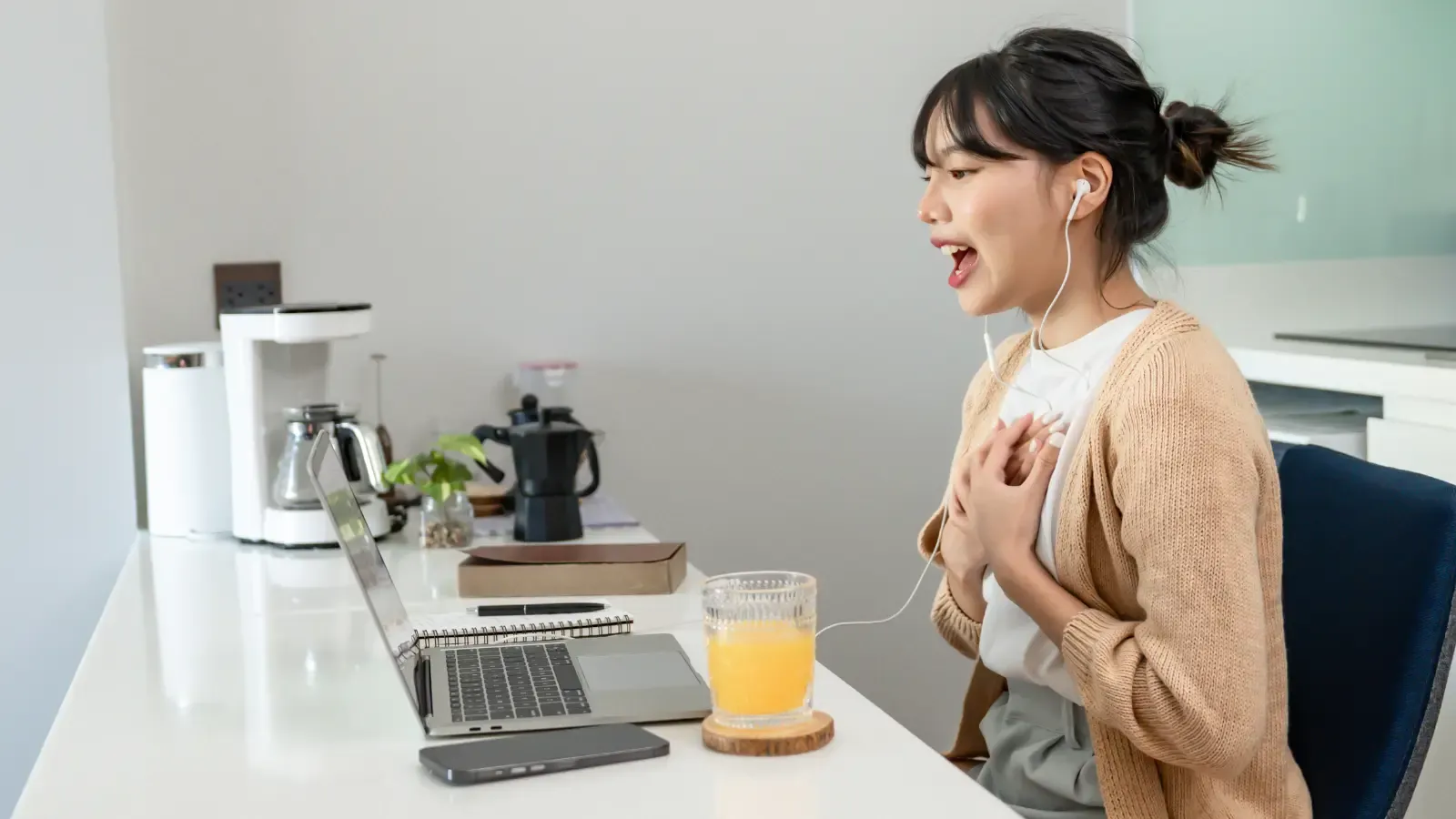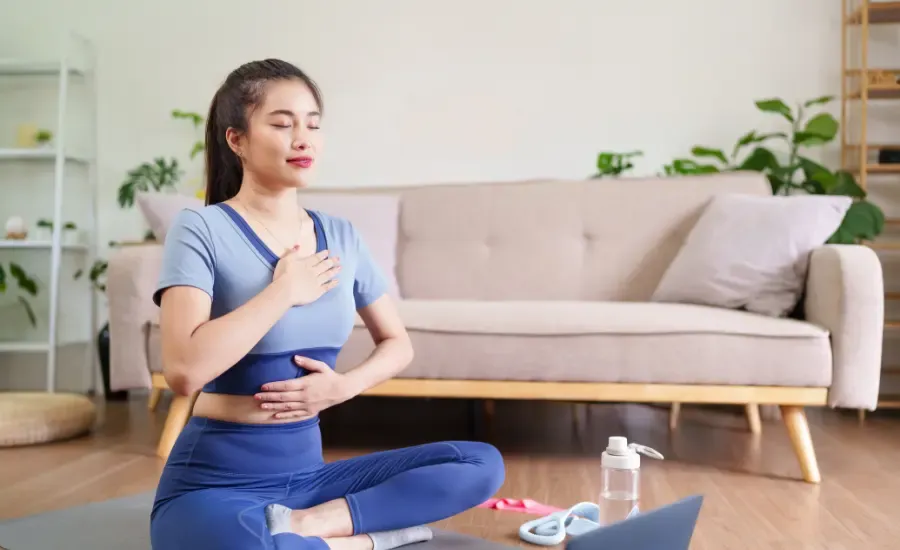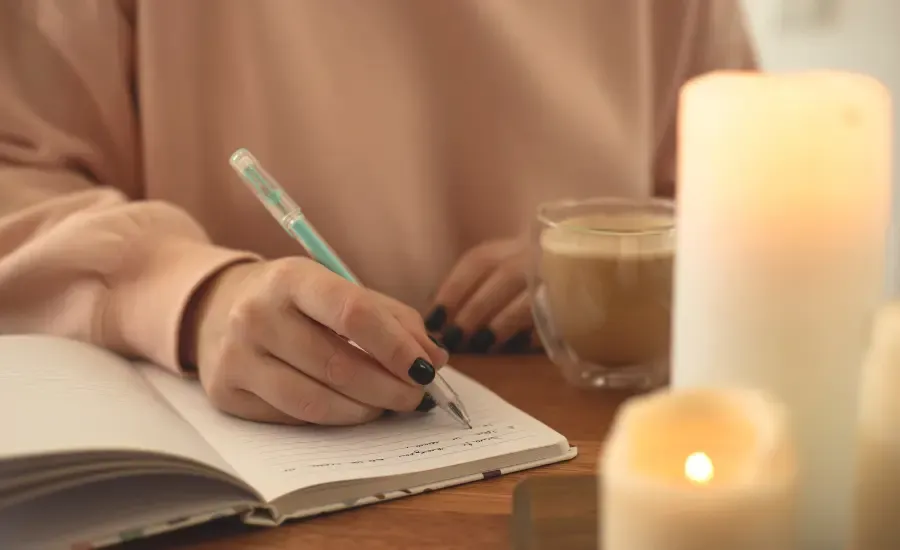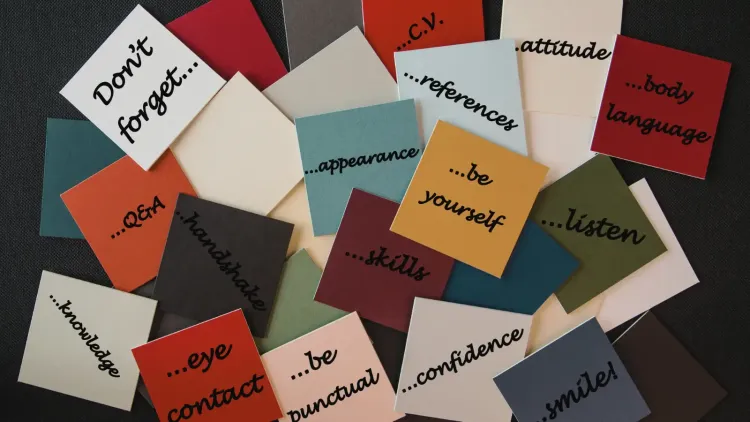
10 Science-Backed Ways to Reduce Work Anxiety (That Actually Work)
This post contains affiliate links. When you purchase through our links, we may earn a small commission at no extra cost to you. This helps support our blog and allows us to continue creating content you resonate with! We always suggest things we've tried and already love!
You know that feeling when your heart starts racing before a big presentation? Or when Sunday evening hits and the work dread creeps in? Yeah, we've all been there. Work anxiety isn't just "being stressed"-it's that persistent, exhausting mental loop that makes even simple tasks feel overwhelming.
According to the Anxiety and Depression Association of America, 72% of people who experience daily stress and anxiety say it interferes with their lives at least moderately. If you're nodding along right now, you're definitely not alone. And more importantly, there are evidence-based strategies that actually help.
In this guide, I break down 10 research-backed methods to reduce work anxiety-not the fluffy "just relax" advice, but practical techniques you can implement this week that have actually helped me stop dreading my next deadline.
Understanding work anxiety: Why it happens
Before we talk about solutions, let's discuss what's actually happening in your brain. Work anxiety typically stems from a combination of high demands, low control over your environment, unclear expectations, and that lovely imposter syndrome many of us carry around like an unwanted accessory.
The problem? Our brains can't always distinguish between a genuine threat and a stressful email. Your fight-or-flight response kicks in regardless, flooding your system with cortisol and adrenaline. Over time, this chronic activation takes a serious toll on your mental and physical health.
The good news? You can retrain your brain's response. Let's get into how.
1. Practice structured breathing techniques
This sounds almost too simple to work, but research from Harvard Medical School shows that deep breathing exercises can directly activate your parasympathetic nervous system-basically, your body's built-in calm-down mechanism.
Try the 4-7-8 breathing technique. Breathe in for 4 counts, hold for 7, exhale for 8. Do this three times when anxiety spikes. It works because the extended exhale signals to your nervous system that there's no immediate danger.
The best part? You can do this anywhere-your desk, a bathroom stall during a panic moment, before walking into a meeting. No one even needs to know.
2. Set actual boundaries (not just talk about them)

We say "set boundaries" like it's easy, but to be honest, it feels impossible when you're worried about being seen as difficult or uncommitted. Here's what research shows: people who set and maintain clear work boundaries report significantly lower levels of burnout and anxiety.
Start small. Perhaps it's not checking email after 7 pm. Or saying no to one non-essential meeting this week. Or simply closing your laptop at a specific time and actually stepping away.
The anxiety you feel setting the boundary is temporary. The anxiety from having no boundaries is permanent.
Read also: I am a Psychologist And These Are The 5 Things You Need To Say No To In Order To Be More Productive
3. Use guided meditation apps (seriously, they work)
I used to be skeptical about meditation apps, too. I thought I needed to sit in silence for an hour to get any benefit. Wrong. Studies published in the Journal of Medical Internet Research found that even 10 minutes of guided meditation daily can significantly reduce anxiety symptoms.
After testing several apps, I've found Headspace to be particularly effective for working women with chaotic schedules. Their sessions range from 3 to 20 minutes, and they have specific courses for workplace stress, anxiety, and even focus. The guided format means you don't have to figure out "how to meditate"-you just follow along.
If you're ready to give it a try, visit Headspace and get a 14-day trial to find out how Headspace can actually help you calm your mind and grow.
4. Schedule "worry time" (yes, really)
I actually love this technique because, although it may sound counterintuitive, it's backed by research from cognitive behavioral therapy. Instead of trying to suppress anxious thoughts all day (which actually makes them worse), you schedule 15-20 minutes to worry intentionally.
When anxiety pops up during the day, you acknowledge it and say, "I'll think about this during worry time." Then, during your scheduled worry session, write down your concerns and work on problem-solving. What's not solvable gets acknowledged and released.
Research shows this technique reduces overall anxiety levels because your brain stops treating every worry as an emergency that needs immediate attention.
5. Move your body (but make it sustainable)
You've heard "exercise reduces stress" a thousand times. What they don't tell you? It doesn't have to be an intense workout. A study from the American Psychological Association found that even a 10-minute walk can improve mood and reduce anxiety.
The key is consistency over intensity. A daily 15-minute walk beats a sporadic intense gym session. Find movement you don't dread-dancing in your kitchen, your favorite yoga poses, walking meetings, whatever actually feels sustainable.
Your brain releases endorphins, yes, but movement also gives your stress hormones something to metabolize. That's why you feel calmer after moving-you're literally processing the stress chemicals.
6. Identify and challenge your anxiety thoughts
Anxiety loves to catastrophize. One critical email becomes "I'm getting fired." A presentation mistake becomes "everyone thinks I'm incompetent." Sound familiar?
Cognitive reframing is a core technique in anxiety management. When you notice an anxious thought, ask yourself three questions:
- What's the evidence for this thought?
- What's the evidence against it?
- What would I tell a friend having this thought?
Usually, your anxiety is spinning worst-case scenarios that aren't based in reality. Challenging these thoughts isn't about toxic positivity-it's about accuracy. Sally M. Winston PsyD & Martin N. Seif PhD (Author) explain in their book "Overcoming Unwanted Intrusive Thoughts: A CBT-Based Guide to Getting Over Frightening, Obsessive, or Disturbing Thoughts" what those thoughts really are and offer some valuable techniques to overcome them.
7. Create a morning routine that grounds you
The first hour of your day sets the tone. Research shows that people who start their mornings reactively (immediately checking email, scrolling social media) report higher anxiety levels throughout the day.
Instead, create a morning routine that centers you before the chaos begins. This might include: 10 minutes of meditation, journaling, reading something inspiring, or simply drinking your coffee without multitasking.
Your morning routine doesn't have to be elaborate. It just needs to be intentional. You're training your nervous system to start the day from a regulated state rather than a reactive one.
For guided morning meditations specifically designed for busy professionals, Headspace is the most accessible and efficient way.
8. Talk about it (isolation makes it worse)
Here's something anxiety doesn't want you to know: talking about your anxiety reduces its power. A study from UCLA found that putting feelings into words-whether through talking or writing-reduces the intensity of negative emotions.

This doesn't mean venting to everyone constantly. But it does mean finding trusted colleagues, friends, or a therapist where you can be honest about what you're experiencing. Chances are, they've felt the same way.
If workplace anxiety is persistent and affecting your daily functioning, consider working with a therapist who specializes in anxiety management. This isn't weakness-it's strategic problem-solving. And if you don't have the time to commute to get therapy, Headspace is here to solve the problem: within the app, you can find affordable licensed therapists that match your needs and -the best- your sessions can be covered by your insurance.
9. Audit your caffeine intake
I know, I know-nobody wants to hear this one. But if you're drinking multiple cups of coffee while already feeling anxious, you might be making it worse. Caffeine stimulates your nervous system, which can amplify existing anxiety.
Notice I'm not saying quit coffee entirely (I wouldn't dare). But if you're feeling particularly anxious, try cutting back by one cup and see if it makes a difference. Or switch to tea in the afternoon. Small adjustments can have surprisingly big impacts.
10. Focus on what you can control
This is perhaps the most important mindset shift. Anxiety thrives when our inner control freak tries to control uncontrollable things-other people's opinions, outcomes, the future.
Make two lists: What I Can Control and What I Cannot Control. For the "cannot control" list, practice acceptance (not resignation-there's a difference). For the "can control" list, make a plan.
You can control: Your response, your boundaries, your self-care, how you prepare, when you ask for help.
You cannot control: Others' reactions, outcomes, the economy, company restructuring, global events.
This practice redirects your energy toward actionable steps instead of spinning in worry.
Building your personalized anxiety management toolkit
Not all of these strategies will work for you, and that's completely fine. The goal isn't to do all 10 perfectly-it's to experiment and find your 2-3 go-to techniques that genuinely help.
Start with one strategy this week. Maybe it's the breathing technique before meetings. Or scheduling that worry time. Or finally downloading a meditation app and committing to 5 minutes daily. Small, consistent actions compound into significant change.
Work anxiety doesn't mean you're weak or incapable. It means you care about what you're doing, and you're navigating a genuinely stressful environment. The difference between managing anxiety and being controlled by it comes down to having effective tools and actually using them.
Remember: managing anxiety is a practice, not a destination. Some days will be better than others. The goal is progress, not perfection.
💜 Ready to start your anxiety management journey?
You'll find my exclusive Headspace link (with a special offer) to finally take the first step and say goodbye to work anxiety.
This article is for informational purposes only and is not a substitute for professional mental health treatment. If you're experiencing severe anxiety that interferes with daily functioning, please consult a licensed therapist or mental health professional.






